#witchcraft resource
Text

Suggested Reading
Threshold Theory
Energy Work Fundamentals
The Subtle Body
Spell Design
Spell Dictation
Sigils: How-to
Intro to Gnosis
Anchors

What is a Spell Circle?
Spell circles, while they aren’t necessary, are a tool that is used as a focal point for a working. They are also very helpful in aiding in headspace via the implementation of aesthetics. Spell circles are technically hypersigils, or a complex sigil that is typically constructed of multiple sigils in tandem. They are typically constructed of three parts: Incantations, foundations, and root sigils. They are used in a ritual format, typically with each practitioner having a standardized approach to using them for spell work.
How do they work?
A spell circle is similar to a sigil in the way that there is an incorporation of intention, energy, passion, and focus in their creation. Spell circles operate most effectively within the energetic model or something adjacent. The psychological model will be entirely ineffective; at least as I have prescribed their creation in this article. They often contain sigils as well as some other elements that serve to connect the circle to the overall working. These elements include incantations, words, phrases, symbology, geometric/organic designs, numerology, etc.
Incantations, words, or phrases can be said out loud as part of the working (provided that doing so doesn’t break gnosis), or written out and burned into ash and incorporated into the working through that process. Though they can also be incorporated in other ways as well. As an example, you could write a song and record it and have the tablature or staff wrapped around the perimeter of the spell circle. You could then listen to the song while casting your spell using it as a centerpoint of your gnosis.
The other elements of a spell circle are used to enhance the threshold of the root sigil or purpose. Each additional element adds a node, or correspondence, to the threshold of the spell. Doing so helps refine the accuracy and potency of the working.
Designing a Spell Circle
If you have experience working with sigils, then designing a spell circle can be pretty easy. I highly recommend using programs like procreate to make these, or drafting tools! Freehanding them can be quite difficult without any experience with technical drawing. I use my tablet to draw them digitally and then trace them onto a burnable substrate such as paper.
Incantation(s)
An incantation is a phrase that is said that astutely states the intent of the spell. It is important to have this memorized, if you use them. Without having them memorized, using them will pull you out of gnosis by disturbing your focus. Incantations are like the thread that binds the spell circle to the rest of the working, especially if you use other tools, sigils, etc. When I construct my spell circles, I use the pronunciation of my sigils as the incantation, which are all aspects of a conlang that I developed. This can be seen as a sigil chain. So long as the incantation is written somewhere on or near the circle, then it is capable of being connected to the burning of those sigils via the incantation. I find that having the incantation encircle the root sigil is the most aesthetically pleasing for me.
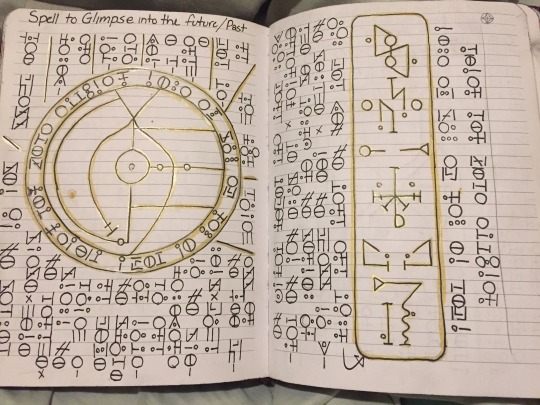

Root Sigil
This is a sigil that is at the core of the circle. It should represent the base goal of the spell. This sigil is connected to the rest of the circle via the Foundation(s). Like all sigils, it is important that it is drawn while channeling its meaning through your mental state, emotions, and subtle body to be most effective.To create them, I will draw the enclosing circle first before drawing a grid within it. This grid is then used to ensure that the root sigil is centered and scaled appropriately. The sigil is always the first part that I draw. Here are a few examples of sigils I have used for spell circles:

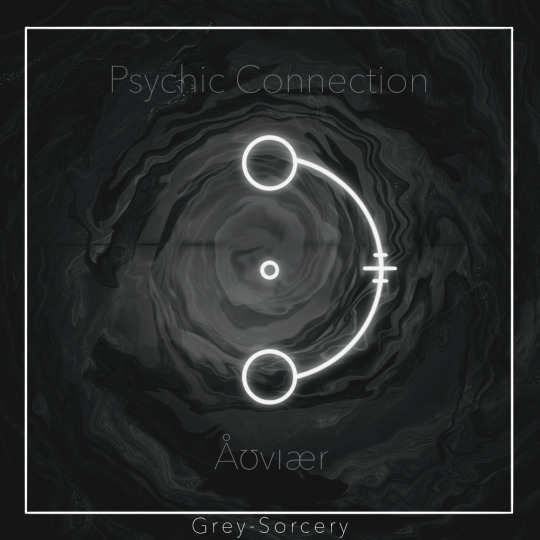
Foundation(s)
Foundations are simple designs that each have their own correspondences. Some foundations use numerology to derive their meaning, others are given their meanings based on how they interact with the root. The foundation(s) used should also align with the purpose of the spell; but more specifically, to describe the means of manifestation of the spell to some degree. They can also be used to expand the context of the root sigil, ex. Whether it is intended to be a blessing or curse. I am always sure that when I draw them in the grid, that they appear to be a part of the sigil, yet also behind it by having the lines stop and continue any shapes that are a part of the sigil, like circles, triangles, and squares. Here are a few foundations that I use:

Associative Symbology
These symbols are things I don't really implement in spell circles myself, but include things such as astrological symbols, alchemical symbols, magical alphabets, color, and imagery. These symbols are typically incorporated in equal distribution around the circle in radial fashion, but can also be used in other configurations. The number of symbols can be implemented with numerology in mind as well. Colored line-work can also be used to further the correspondences. Imagery such as pictographs can also be used, following similar implementation as other symbols.

Applications
Spell Circles can be used for all sorts of workings, typically in a ritualistic fashion. However, they may also be used as passive sigils, meaning that they are placed and affect a specified space gradually over time. If they are used in this fashion, they will need to be revisited and charged periodically. When using a spell circle in a ritual, place them underneath the central spell elements such as cauldrons, candles, bowls, etc. Please use discernment. Fire safety is of the utmost importance. Once the spell is in motion, use the incantation that connects the circle to the working. I highly recommend rehearsing your incantation until it is memorized so that your spell’s effectiveness isn’t hindered. I highly recommend placing a spell anchor onto your spell circle as well so that there is a direct medium holding it. This way the spell can be recharged, broken, or altered as necessary.
Ritual Closing & Disposal
As part of closing any working, it is important to close off all energy that is connected to the working other than the anchor. Part of this is disposing of the spell circle in a responsible manner. This can be through responsibly burning it and burning the ashes, burying the spell circle itself (Provided it is on a biodegradable medium), soaking it in water to dissolve the ink and then cleansing the medium, or if it is drawn on a dry-erase board you can just erase it and cleanse it. When burying the ashes of your working, try to use your discretion as to which direction it is buried relative to your sleeping place or place of casting.
Identifying a Spell Circle
A few popular designs for spell circles have been misidentified in the past, specifically those of John Dee, who was a prolific cryptographer. These designs have a lot of the hallmarks of spell circles; however, they are enclosed with 72 latin letters, which don’t have any magical or mystical correspondences, but are very common in encryption wheels, and then are encoded through biblical reference. The influence his work had was very substantial in the development of spell circles and their design. While his encryption circles can be used for magic, like any other design drawn through intention, passion, and gnosis, it is obvious that it was not intended as such given the historical context of his life.
Interested in my other articles? You can find my masterpost here.
Patron Shoutouts!
Megan Kipp
Jinsu
Thank you for your continued support! My patrons help me maintain the drive to create content and help me keep food in my pantry.
My patrons of Mystic tier and higher had access to this article a week before it was public! To see other perks of supporting me, click here!
#informational post#spellwork#spellcraft#spell casting#spell craft#spell circle#witchcraft#witchcraft resource#witchcraft guide#ritual#beginner witch#sigil#sigil creator#energy work#sigil magic
685 notes
·
View notes
Text
occult books and references!
collections: (pdfs on google docs)
https://docs.google.com/document/u/0/d/1rQeBdU91DN74tYBRY9-qb5jp8b0fayzDFN5drULV3pk/mobilebasic
above is the holy grail for beginners! so many great resources.
satanic bible:
beginner chaos magick
mirror magick
preotection and reversal magick
72 angels
ars vercanus advanced witchcraft
art of evocation
#occultism#occultblr#witchblr#witchcraft community#witchcraft#witchcraft resource#occultist#occult#witchy#witch books#occult books#occult resources#chaos magick#enochian#paganism#ars goetia#demonaltry#satanism
192 notes
·
View notes
Text
Homemaking, gardening, and self-sufficiency resources that won't radicalize you into a hate group

It seems like self-sufficiency and homemaking skills are blowing up right now. With the COVID-19 pandemic and the current economic crisis, a lot of folks, especially young people, are looking to develop skills that will help them be a little bit less dependent on our consumerist economy. And I think that's generally a good thing. I think more of us should know how to cook a meal from scratch, grow our own vegetables, and mend our own clothes. Those are good skills to have.
Unfortunately, these "self-sufficiency" skills are often used as a recruiting tactic by white supremacists, TERFs, and other hate groups. They become a way to reconnect to or relive the "good old days," a romanticized (false) past before modern society and civil rights. And for a lot of people, these skills are inseparably connected to their politics and may even be used as a tool to indoctrinate new people.
In the spirit of building safe communities, here's a complete list of the safe resources I've found for learning homemaking, gardening, and related skills. Safe for me means queer- and trans-friendly, inclusive of different races and cultures, does not contain Christian preaching, and does not contain white supremacist or TERF dog whistles.
Homemaking/Housekeeping/Caring for your home:
Making It by Kelly Coyne and Erik Knutzen [book] (The big crunchy household DIY book; includes every level of self-sufficiency from making your own toothpaste and laundry soap to setting up raised beds to butchering a chicken. Authors are explicitly left-leaning.)
Safe and Sound: A Renter-Friendly Guide to Home Repair by Mercury Stardust [book] (A guide to simple home repair tasks, written with rentals in mind; very compassionate and accessible language.)
How To Keep House While Drowning by KC Davis [book] (The book about cleaning and housework for people who get overwhelmed by cleaning and housework, based on the premise that messiness is not a moral failing; disability and neurodivergence friendly; genuinely changed how I approach cleaning tasks.)
Gardening
Rebel Gardening by Alessandro Vitale [book] (Really great introduction to urban gardening; explicitly discusses renter-friendly garden designs in small spaces; lots of DIY solutions using recycled materials; note that the author lives in England, so check if plants are invasive in your area before putting them in the ground.)
Country/Rural Living:
Woodsqueer by Gretchen Legler [book] (Memoir of a lesbian who lives and works on a rural farm in Maine with her wife; does a good job of showing what it's like to be queer in a rural space; CW for mentions of domestic violence, infidelity/cheating, and internalized homophobia)
"Debunking the Off-Grid Fantasy" by Maggie Mae Fish [video essay] (Deconstructs the off-grid lifestyle and the myth of self-reliance)
Sewing/Mending:
Annika Victoria [YouTube channel] (No longer active, but their videos are still a great resource for anyone learning to sew; check out the beginner project playlist to start. This is where I learned a lot of what I know about sewing.)
Make, Sew, and Mend by Bernadette Banner [book] (A very thorough written introduction to hand-sewing, written by a clothing historian; lots of fun garment history facts; explicitly inclusive of BIPOC, queer, and trans sewists.)
Sustainability/Land Stewardship
Braiding Sweetgrass by Robin Wall Kimmerer [book] (Most of you have probably already read this one or had it recommended to you, but it really is that good; excellent example of how traditional animist beliefs -- in this case, indigenous American beliefs -- can exist in healthy symbiosis with science; more philosophy than how-to, but a great foundational resource.)
Wild Witchcraft by Rebecca Beyer [book] (This one is for my fellow witches; one of my favorite witchcraft books, and an excellent example of a place-based practice deeply rooted in the land.)
Avoiding the "Crunchy to Alt Right Pipeline"
Note: the "crunchy to alt-right pipeline" is a term used to describe how white supremacists and other far right groups use "crunchy" spaces (i.e., spaces dedicated to farming, homemaking, alternative medicine, simple living/slow living, etc.) to recruit and indoctrinate people into their movements. Knowing how this recruitment works can help you recognize it when you do encounter it and avoid being influenced by it.
"The Crunchy-to-Alt-Right Pipeline" by Kathleen Belew [magazine article] (Good, short introduction to this issue and its history.)
Sisters in Hate by Seyward Darby (I feel like I need to give a content warning: this book contains explicit descriptions of racism, white supremacy, and Neo Nazis, and it's a very difficult read, but it really is a great, in-depth breakdown of the role women play in the alt-right; also explicitly addresses the crunchy to alt-right pipeline.)
These are just the resources I've personally found helpful, so if anyone else has any they want to add, please, please do!
#homemaking#homemaking resources#gardening#urban gardening#self sufficiency#self sufficient living#sustainability#sustainable living#homesteading#nontrad homemaker#nontrad housewife#urban homesteading#solarpunk#cottagecore#kitchen witch#kitchen witchcraft#crunchy to alt right pipeline#book rec#book recommendations#resource#long post#mine#racism tw#racism mention#transphobia tw#transphobia mention
1K notes
·
View notes
Text
﹒ ⁺ ♰ ˳ ﹒

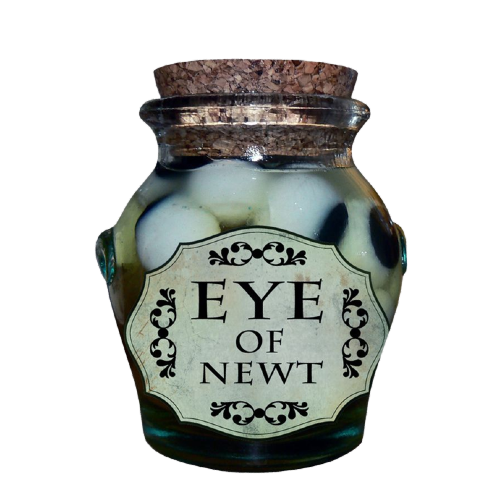
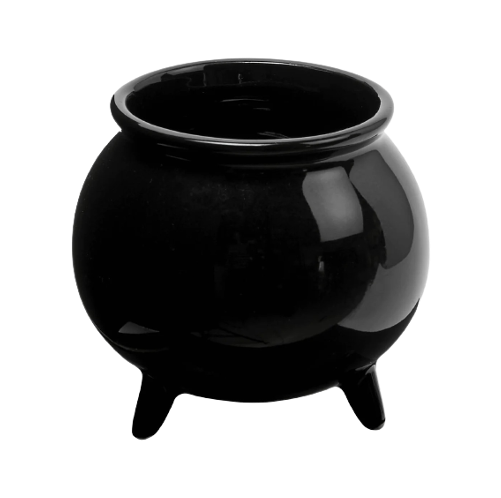


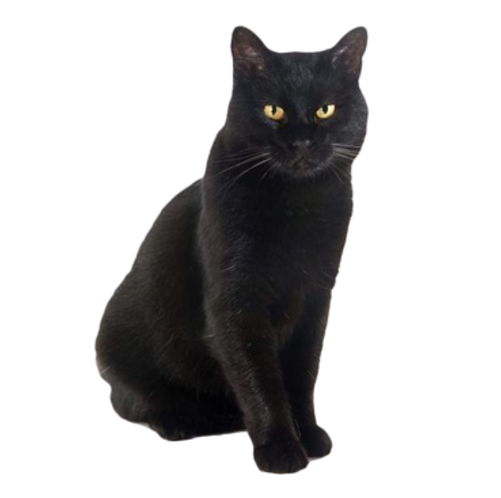



#whimsigoth#goth#witch#witchcraft#witchcore#png#png images#png icons#transparent png#transparent#carrd#carrd pngs#carrd icons#carrd help#carrd stuff#carrd resources#rentry#rentry resources#emote#aesthetic emote#discord emote
2K notes
·
View notes
Text
"How can I be a witch/pagan without falling for conspiracy theories/New Age cult stuff?" starter kit
Posts & Articles
Check your conspiracy theory. Does any of it sound like this?
Check your conspiracy theory part two: double, double, boil and trouble.
QAnon is an old form of anti-Semitism in a new package, experts say
Some antisemitic dogwhistles to watch out for
Eugenicist and bioessentialist beliefs about magic
New Age beliefs that derive from racist pseudoscience
The New Age concept of ascension - what is it?
A quick intro to starseeds
Starseeds: Nazis in Space?
Reminder that the lizard alien conspiracy theory is antisemitism
The Ancient Astronaut Hypothesis is Racist and Harmful
The Truth About Atlantis
Why the Nazis were obsessed with finding the lost city of Atlantis
The Nazis' love affair with the occult
Occultism in Nazism
Red flag names in cult survivor resources/groups (all of them are far right conspiracy theorists/grifters)
The legacy of implanted Satanic abuse ‘memories’ is still causing damage today
Why Satanic Panic never really ended
Dangerous Therapy: The Story of Patricia Burgus and Multiple Personality Disorder
Remember a Previous Life? Maybe You Have a Bad Memory
A Case of Reincarnation - Reexamined
Crash and Burn: James Leininger Story Debunked
Debunking Myths About Easter/Ostara
Just How Pagan is Christmas, Really?
The Origins of the Christmas Tree
No, Santa Claus Is Not Inspired By Odin
Why Did The Patriarchal Greeks And Romans Worship Such Powerful Goddesses?
No, Athena Didn't Turn Medusa Into A Monster To Protect Her
Who Was the First God?
Were Ancient Civilizations Conservative Or Liberal?
How Misogyny, Homophobia, and Antisemitism Influence Transphobia
Podcasts & Videos
BS-Free Witchcraft
Angela's Symposium
ESOTERICA
ReligionForBreakfast
Weird Reads With Emily Louise
It's Probably (not!) Aliens
Conspirituality
Miniminuteman
Behind The Bastards
2K notes
·
View notes
Text
The Power of Intuition: Developing Your Psychic Abilities.
🌟✨
Intuition is a powerful gift that we all possess. It's the inner knowing, the gut feeling, the psychic sense that guides us. Whether you're new to exploring your intuitive abilities or looking to enhance them, here are some exercises and tips to help you tap into the magic of your own intuition.
🌟✨
1. Meditation for Clarity 🧘♂️🌌
Take time each day to meditate. Clear your mind, focus on your breath, and allow your intuition to surface. The more you practice, the more in tune you become with your inner wisdom.
2. Trust Your Gut Feeling 🤔💭
Start small by listening to your gut instincts in everyday situations. Trust that inner voice when making decisions. Over time, this will strengthen your intuitive muscle.
3. Tarot and Oracle Cards 🔮🃏
Experiment with divination tools like Tarot or Oracle cards. These can be excellent tools for honing your intuitive skills. Draw a card daily and interpret its message based on your intuition.
4. Dream Journaling 🌙📓
Keep a dream journal by your bedside. Record your dreams as soon as you wake up. Often, dreams contain intuitive insights and symbolism that can be deciphered over time.
5. Practice Empathy and Active Listening 👂❤️
Empathize with others and practice active listening. Tuning into their emotions and thoughts can help you fine-tune your intuitive abilities.
6. Nature Connection 🌿🌳
Spend time in nature. The natural world has its own intuitive energy. Take walks, sit quietly, and observe. Nature can amplify your intuitive senses.
7. Develop Your Third Eye Chakra 🧘♀️👁️
Work on balancing and opening your third eye chakra through meditation and visualization exercises. This energy center is often associated with intuition.
8. Trust the Process 🌟🌈
Remember, developing intuition takes time and patience. Trust in your own unique journey. Your intuition is like a muscle; the more you use it, the stronger it becomes.
9. Seek Guidance 🤝🌠
Consider seeking guidance from experienced intuitives or psychics. They can offer insights and techniques based on their own experiences.
10. Keep a Journal of Intuitive Experiences 📔✨
Document your intuitive experiences in a journal. This helps you track your progress and learn from your insights.
🌟✨
Your intuition is a valuable compass on your life's journey. Embrace it, nurture it, and allow it to illuminate your path. The more you connect with your intuition, the more you'll discover the profound wisdom that resides within you.
Embrace the magic of your intuition, and let it lead you toward a deeper understanding of yourself and the world around you.
🌟✨
#baby witch#beginner witch#book of shadows#closet witch#grimoire#magick#witch#witch community#witch tips#witchblr#witchlife#witchcraft 101#witches of tumblr#witch resources#eclectic witch#witchcraft#witchcraft community#witchy things#witchcore#psychic abilities#psychic#witchyvibes#tarotcommunity#oracle cards#tarot cards#intuition#chakras#7 chakras#spiritual practitioner#witch aesthetic
563 notes
·
View notes
Text
10 Tips For the Beginner Witch
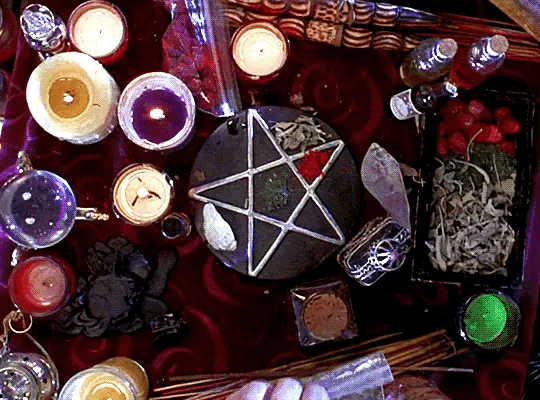
1. Don't rush into things:
Take the time to explore and learn about witchcraft, its traditions, and practices. Resist the urge to jump into more advanced practices or take on too much at once. Start small and build your knowledge and skills gradually.
2. Don't believe everything you read online:
Be mindful of where you get your information about witchcraft. Do thorough research and cross-check multiple sources before adopting any beliefs or practices. Remember that not everything online is reliable or accurate.
3. Don't compare yourself to others:
Each person's journey in witchcraft is unique, and it's important to focus on your own growth and path. Don't compare yourself to others or try to measure up to someone else's standards. Embrace your own journey and celebrate your progress.
4. Don't neglect self-care:
Witchcraft can be emotionally and mentally taxing, so prioritize self-care. Take time for yourself to recharge, meditate, and do things that bring you joy. Pay attention to your physical and emotional health and practice self-compassion.
5. Respect nature and the elements:
Witchcraft often involves working with the elements and nature, so treat them with respect. Avoid harming wildlife, littering, or engaging in practices that harm the environment. Build a relationship with nature and the elements based on respect, gratitude, and reciprocity.
6. Don't force your beliefs on others:
Witchcraft is a personal practice, and everyone has their own beliefs and experiences. Respect the beliefs of others, and don't try to force your own beliefs on anyone else. Be open-minded and respectful of different perspectives and approaches to witchcraft.
7. Ask for help:
The witchcraft community is a supportive and knowledgeable community. Don't hesitate to ask for help, guidance, or advice from more experienced practitioners. Join online forums or local groups to connect with others and learn from their experiences.
8. Balance your practice with mundane responsibilities:
Witchcraft can be a fulfilling and meaningful part of your life, but don't neglect your everyday responsibilities. Make sure to balance your practice with your job, family, and other obligations. Remember that taking care of yourself and your responsibilities is an important part of a healthy witchcraft practice.
9. Keep a grimoire or book of shadows:
Keeping a grimoire or book of shadows is a valuable tool for any beginner witch. It allows you to record your experiences, insights, and practices, and serves as a reference for your ongoing learning and development.
10. Embrace experimentation:
Witchcraft is a creative and experimental practice, so embrace your inner curiosity and explore different practices and techniques. Try out different forms of divination, herbalism, meditation, or ritual practices to find what resonates with you. Remember that experimentation and playfulness are key components of a healthy and dynamic witchcraft practice.
As you embark on your enchanting journey as a beginner witch, remember to take your time and savor each magical moment. Witchcraft is a unique and personal practice that is meant to be explored and experienced with joy and curiosity. Remember to approach your craft with wonder and gratitude for the beauty of nature and the elements. May your path be filled with enchantment and wonder as you explore the mystical world of witchcraft.
My Ko-Fi
#witchcraft#witches#baby witch#beginner witch#witch tips#baby witch tips#beginner witch tips#magick#witchblr#witches of tumblr#ref#beginner witch resource#witchy
1K notes
·
View notes
Text
Coin's Resources for Research
Here's a list of my personal favorite resources for researching witchcraft, magic, and the occult!

Websites
Sacred Texts - This site is a collection of electronic texts about religion, mythology, legends and folklore, and occult and esoteric topics. Almost all of it is in the English language (translated) and when possible they give the original language (which is quite often)!
Jstor - Home to thousands of scholarly content. While there are limitations to the open and free content on the site, they still have quite a lot to offer! If you can afford the paid version I highly suggest you do so.
Wikipedia - I don't care what your high school lit teacher told you, Wikipedia is a great resource and a wonderful way to find where to start when you're learning a new topic.
Encyclopedia Britannica - A fact-checked online encyclopedia with hundreds of thousands of objective articles, biographies, videos, and more.
Hoopla - A digital library where you can borrow books, audio books, and more! It's connected to your local library so make sure you get a library card!
Libby - Same situation as Hoopla.
Worldcat - A website that helps you track down reliable sources that you can only find in libraries.
PDFDrive - A website with thousands of free pdfs. It doesn't always have what I'm looking for but it's always worth a shot to check!
Youtube
Esoterica - Run by Dr. Justin Sledge, Esoterica is a channel that discusses the arcane in history, philosophy, and religion.
Angela's Symposium - Dr. Angela Puca's channel where she covers peer-reviewed research and scholarship on magic, witches, esoteric traditions, the occult, Paganism, shamanism and related currents.
ReligionForBreakfast - Dr. Andrew M. Henry's channel that discusses--you guessed it--religion! His goal is to improve the public's religious literacy by exploring humanity's beliefs and rituals through an anthropological, sociological, and archaeological lens.
Misc
Ronald Hutton - Hutton is an invaluable resource and a fantastic historian. He writes the facts without being pretentious and is often quite funny too!
Wiki's List of Occult Writers
Wiki's List of Occult Terms
#witchcraft#witchblr#research#witchy research#baby witch#new witch#occult resources#witchy resources
211 notes
·
View notes
Text
Free Witchcraft Resources for Beginners
A couple months ago I made a post shouting out the fact that witchcraft doesn’t require any money to get started (or to be practiced, for that matter), and I had a few people ask me about what they can do that’s free, especially as a beginner, so I wrote up this post. I was lost and broke when I was getting started with my craft, and it was really difficult to find tips for beginners that weren’t just “buy these things!” I’m hoping this will be useful for people who are looking for a place to begin.
So. You’re interested in witchcraft and would like to find out more. Maybe you keep seeing those “crystals/herbs/books/etc. beginner witches should have” posts, and you’re frustrated, because you want to begin your practice, but don’t have the money for those supplies. I was once in that spot, and even now that I’m five years into my practice, I have rarely purchased any of the supplies witchtok deems to be fundamental. Here are some places you can begin instead. Let’s get started!
Info continues below.
Foundations
By foundations, I’m referring to things that aren’t explicitly witchcraft, but that I have found very beneficial within my own practice.
1. Before anything, I recommend asking yourself a simple question: why do I want to practice witchcraft, and what do I hope to get out of it? You may not know for sure yet, and your answer will likely change over time, but having some intentions going in can be helpful when you’re in the early stages of research. When I was starting out, I felt very overwhelmed by the amount of info out there, so if you have a bit of an idea of what you’re specifically interested in, that can be helpful to get you going.
2. Meditation: not all witches meditate, but a lot of the skills you develop through meditation can be helpful within witchcraft. You can try out secular meditation (apps like Balance and Headspace, as well as Insight Timer—the former has a mix of secular and spiritual meditations), or you can find a witchcraft-specific guided meditation on YouTube. For neurodivergent folks out there, I recommend looking into active meditation, which I’ve found to be quite beneficial for myself.
For me, it’s always important to remain grounded when I’m doing any spiritual practice, and meditation is a good skill you can work on to help with that. I also find that having a background in meditation can be really helpful later down the line when/if you are attempting visualization and/or astral projection, witch’s flight, and so forth.
3. Journaling: another thing that isn’t specifically witchcraft-related, but is an important skill to harness, on my opinion. To me, it’s crucial to be in touch with what I’m feeling (especially when it comes to doing spellwork), and journaling is one great way to do that. If you’re stuck and don’t know where to begin, look up witchcraft (or general) journal prompts on here or somewhere else. A lot of the ones that come up will be shadow work, which can be intense, so only do what feels comfortable for you.
I’d also like to note that automatic writing/drawing is an entirely free option if you’re interested in communing with spirits or deities. Essentially it involves getting into a trance-like state (usually in a dark room only lit by candlelight or similar—this is to avoid distractions) with a piece of paper and pen, and you write or draw everything that comes to your head without thinking about it. And then you go back and see what sort of messages you may be receiving. It’s a bit hard to explain and I’m not very experienced in it myself, but it’s something worth looking into if it sounds interesting to you!
4. Look at what you have, instead of what you don’t: a lot of beginner witch resources will list specific items that you should have, without really explaining why. And without that knowledge of how/why having an item is important, you might find your Must Have crystal sitting unused on a shelf somewhere. So instead of focusing on the items you want or feel like you should have, look at what you do have. Are there plants or herbs in your house/yard that you feel drawn to? Do you have a collection of cool rocks and stones? How do these items make you feel?
For me, a large part of my craft is my belief in Animism (the belief that all living things have innate spiritual qualities, like a soul, spirit, or specific energy) and this can play into the way you interact with the natural world if it’s a belief you also subscribe to. Try and feel the presence of a plant to see if it gives you any specific feeling. It does? Great! Now you have a correspondance for that plant. And it’s even better than the correspondances you’ll get in a book because it’s based on your own personal connection and intuition. That’s what is most important.
5. When in doubt, use your intuition. You might find a source that says cinnamon should be used for protection. Another will say it should be used for abundance spells. What matters the most is what you think about an herb/plant/stone/colour, or whatever else you may utilize. I recommend to start keeping a list of what you associate these things with. It can take awhile to build up a personalized list, but once you have one, it’ll be a lot more useful than what a correspondances book says to do.
6. Scour your pantry and get cooking: are you wanting to try out a spell but you haven’t bought the ingredients? Look in your pantry. You may be surprised by how many commonly used witchcraft herbs you find in there. And if you have been starting to associate certain herbs or spices with specific feelings or energies, that’s a great way to get started with creating your own spell.
You can do a spell in many ways, but when I was starting out, one of my favourite ways was to incorporate a certain herb or spice into food I made. Say you’re making a soup and maybe you want a bit of protection, so you add some ground pepper with the intention of that pepper protecting you as you stir it into the soup. Same goes for any other ingredient you’d like to use. A little intention goes a long way!
7. Dedicate your actions, time, or energy: if you’re interested at all in working with deities, ancestors, and other spirits but don’t have the time/space to build an altar—or maybe you aren’t sure how involved you want to be with this part of witchcraft—you can devote an action to the entity. This can be simple. For example, when I worked with Apollo, I would use taking my meds and vitamins as an act of devotion to him. This is an offering. And offerings can be anything you want them to be. They don’t have to be expensive or fancy!
It’s also important to note that you do not need to work with deities or spirits to be a witch. You don’t even have to believe in them. Many witches are atheists or don’t work with any deities at all. But for those who are interested, simple offerings can be a good place to start.
8. Practice energy work: in my view, energy work is the most important skill to learn for your craft, since so many things build off of it. And with energy work, you don’t need to spend any amount of money on it. All you need is yourself, your intuition, and anything else—I mean that quite literally, you can practice feeling the energy of other people, pets, trees, buildings, foods, socks, your favourite pen, and whatever else you think of!
Once you get to know the energy of the things around you, you can more effectively utilize them as tools within your practice (this builds off of the intuition point I made earlier).
For example, as a child I lived in a house that was surrounded by cedar trees. It was a place where I felt very safe. To this day, when I see or smell a cedar tree, I feel safe and protected. You can read this any way you’d like—to me it’s both a spiritual and psychological phenomenon—but this is one example of sensing energy.
As a witch, you can practice that skill and use it to get to know the tools you’d like to use within your own craft (the things that connect to you personally, not what you’re told you should connect with). This isn’t an easy skill by any means, so if it doesn’t come naturally to you, that’s perfectly okay!
For more on this subject, I recommend two books: Braiding Sweetgrass by Robin Kimmerer (more on animism in particular) and Psychic Witch by May Auryn (lots of exercises to practice working with and sensing energy).
Where to Go for Learning
After you’ve thought a bit about some of the above, or skipped it altogether if it doesn’t suit you, you’re probably wanting some good resources that will actually tell you how to do the witchcraft thing. But before that, I want to reiterate again that this is your practice, and you should only do what you are interested in. So take what you want and leave what you don’t.
I’m going to point you in three primary directions for learning good information: books, podcasts, and YouTube.
But first, I want to issue a massive disclaimer for the YouTube information (and some books, for that matter). You should not have one sole source for your information. Books that have bibliographies are always the most trustworthy sources. And even though I trust the information coming from the YouTubers I’ll mention—especially because I’ve read similar information in several witchcraft books—don’t take their word at face-value. Be critical of what you’re told. Believe what you believe. This is a skill you’ll learn over time. It can be a bit overwhelming at first, but it will get easier to discern what’s good info vs. bad info, over time.
Before you get started, I highly recommend watching this helpful video by HearthWitch with info on how to vet your witchcraft sources: link.
Books
In my view, books are the Best source of information, period. Anyone can publish an article or video online, but not everyone can publish a book. So there tends to be a bit more reliable info in witchcraft books.
As far as knowing what book you should begin with, there are lots of lists out there for beginners, and I recommend just looking at one of those lists and picking what sounds interesting to you. Take what you like and leave what you don’t.
Most of the YouTubers I’ve listed below have videos recommending books for beginners.
If you’re interested in British folk witchcraft, I started out with Folk Witchcraft by Roger J. Horne and it was a brilliant beginners guide that I recommend to anyone who is interested in that branch of witchcraft.
As always, while you read witchcraft books, be critical of the information you are presented with. Unfortunately, lots of witchcraft books (especially the classic ones) can be rooted in concepts like bioessentialism, colonialism, and racism. My recommendation is to not take any author’s word as gospel and to use your critical thinking skills when reading witchcraft books.
Where I live, books are EXPENSIVE. And when you’re just starting out in your practice, you might not have the money or ability to go out and buy a book just yet. Maybe you’re still unsure if witchcraft is right for you. Or maybe you’re in the “broom closet.” Whatever the reason, here are some free places to find books.
1. The public library: a bit obvious, but a great resource to look at, because you never know what your library might have. Libraries are the best. And entirely free!
2. Library apps like Libby or Overdrive: especially helpful if you don’t want to bring home a physical witchcraft book, or if your branch doesn’t have any copies of what you’re looking for. You can also get some audiobooks on there.
3. Archive.org: aka the web archive. Entirely free and entirely legal, this works as an online library service where you can check out a book for a bit of time right from your computer. Sometimes you can download PDFs as well. I’ve found a lot of my favourite witchcraft books on there, so if you have a specific title in mind, search it there.
YouTube
First, as a bit of a caveat before recommending you to watch YouTube videos on witchcraft: in my view, books are the best source of information for any witch, as they are able to contain a large degree of nuanced and research-informed information. But books aren’t a simple solution for everyone, and I’ve learned a lot from informed YouTubers over the years (in fact, like many witches, I was first exposed to witchcraft via Harmony Nice on YouTube!).
I’m including a list here of witch YouTubers that I personally recommend because I have found that their content aligns with information I have read in books and other research-informed sources over the years, and because I find them to be generally reliable.
I want to note here that this list is rather biased, as I tend to watch witchcraft YouTubers whose practices mirror my own in some ways. So most of these practitioners have practices informed by European folk witchcraft, and are not very diverse as a result. If any practitioners have further recommendations to add on, especially for practitioners of colour and practices that are different from mine, please do so!
My recommendations:
ChaoticWitchAunt: folk witchcraft, specifically in the Italian tradition, some great beginner content, info on working with saints and spirits.
TheWitchOfWonderlust: death magic, spellwork, great beginner content, lots of excellent info on working with spirits.
HearthWitch: truly a well of information on British witchcraft, beginner videos on any topic you can think of, q&a livestreams, and there’s even a video on vetting witchcraft sources that I really recommend for beginners.
The Redheaded Witch: folk witchcraft and folklore, spirit and ancestor work, daily witchcraft ideas, some beginner videos.
TheGreenWitch: such an excellent resource for herbal/green witchcraft, videos on spellwork, ingredients, tools, and more.
Mintfaery: lots of beginner information, videos on working with the fae, nature witchcraft, and lots of fun witchy days in the life.
Ella Harrison: German folk witchcraft, great beginner resources, including some more niche traditional craft topics like witch’s ladders.
The Norse Witch: info on Norse witchcraft and Heathenry, Norse paganism, and some content about astrology.
simplywitched: lots of great everyday witchcraft content, pagan witchcraft, more vlog style.
Warrior Witch Nike: witchy book reviews, paganism, deity work, some astrology content.
Mhara Starling: the place to go for anyone interested in Welsh witchcraft and folk magic related to Wales.
Alwyn Oak: lots of witch’s guides, especially relating to sabbats (those popularized in Wicca), forest witchcraft, gorgeous videos.
Ivy The Occultist: chaos magick and lots of interviews with practitioners from a variety of paths/backgrounds.
Shadow Harvest: personal day in the life witchy content, some videos looking at working with dark goddesses and deity work in general.
Note: some of these YouTubers have written their own witchcraft books geared towards beginners, so if you enjoy their videos and want to learn more, check those out.
Podcasts
The Astrology Podcast: not specifically witchcraft, but if you want to learn about astrology in detail, this is an excellent place to begin. Link goes to YouTube.
Books and Broomsticks: all kinds of good info, especially pertaining to folk magic, witch guests invited on to share more about their own practice. Link goes to Spotify.
Southern Bramble: A Podcast of Crooked Ways: a variety of witchcraft related topics, interviews, and discussions, often revolving around folk magic and traditional craft—interviews show different traditions. Link goes to Spotify.
New World Witchery - The Search for American Traditional Witchcraft: what it says on the tin; various topics and conversations through an American traditional/folk magic lens by the author of the (amazing) book with the same name. Link goes to Spotify.
Salty Witches Podcast by Cat & Cauldron: traditional witchcraft through a modern lens, another podcast that has a wide variety of topics covered. Link goes to Spotify.
—
As always, if anyone has any additional (free!) resources to add onto these ones, please do so.
Good luck to all of the beginner witches who are embarking on their spiritual journeys, and I hope some of these tips have been helpful! :)
-Em
#been working on this post since october first which is just crazy…it took So Long#I searched everywhere for info like this when I was a beginner but all I found were lists of things to purchase#which isn’t helpful when you’re broke and living through a recession!#I hope this hopes someone out there <3#witchcraft resources#witchcraft 101#witchcraft info#beginner witchcraft#witchcraft#witchblr#beginner witch#folk witchcraft#baby witch#resources#my post
249 notes
·
View notes
Text
New Witch Resources
I’m gonna say it again, I made a google doc full of online resources for new witches!
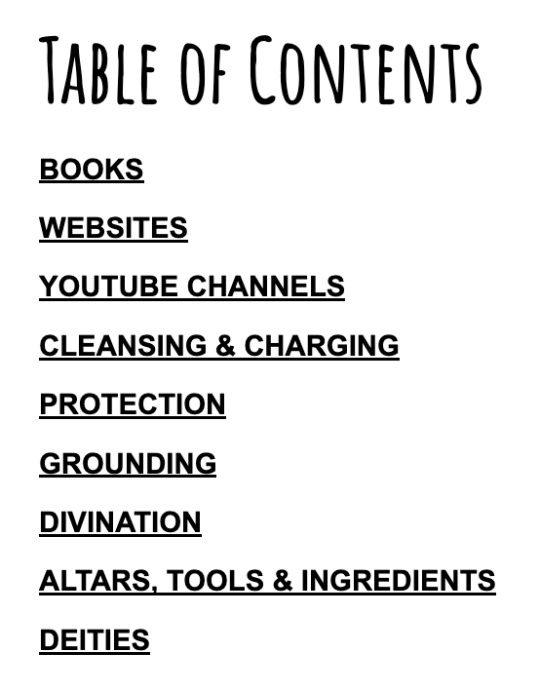
See see see it’s absolutely packed with good stuff! We’re talking PDFs, small businesses to get books from, and tons of links. Please go check it out! And remember my DMs are always open if you have any or many questions 💕
#witch#witchcraft#witches of tumblr#witches#witch tips#witchy tips#witchytips#witchblr#beginner witch#baby witch#new witch#new witch tips#witchcraft 101#witch community#new witch resources#baby witch resources
3K notes
·
View notes
Text
Everything You Need to Know About Crystals: Carnelian (Red)
Carnelian (The Sunset Stone)
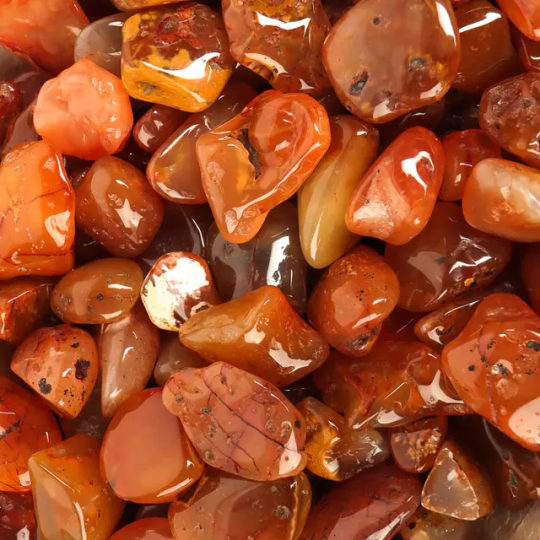
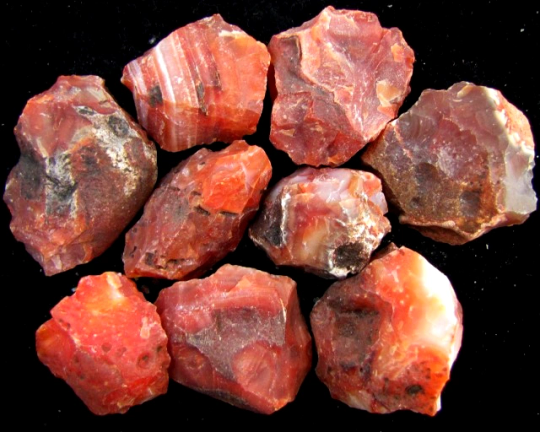


Color: Red, orange, pink, brown
Rarity: Common, easy to obtain
Hardiness: 7
Type: Agate or Chalcedony
Chakra Association: Solar-Plexus, Sacral, Root Chakra
Angels: Michael
Deities: Isis
Astrological Signs: Leo, Taurus, Aries
Element: Fire
Planet: Sun
Origin: Britain, India, Czech Republic, Slovakia, Peru, Iceland, Romania
Powers: Success, Confidence, Motivation, Courage, Sexual Energy, Vitality, Action
Crystals It Works Well With: Aquamarine, Beryl, Super Seven
How It is Created: It is part of the chalcedony family. It is made up of silicon dioxide colored by different levels of iron impurities, with specks, banding, or stripes in many shades of brown or orange-red. The stone itself has a beautiful warm orange color that is best appreciated when it is polished.
History: Since ancient times, carnelian has been polished and worn as jewelry. The Egyptians used it to contrast with onyx and lapis lazuli in the making of collars and necklaces. The Romans were fond of it set in gold, using small beads in earrings or larger polished stones in finger rings for men and women. In the Middle Ages, carnelian was also popular as a healing stone. It was said to dissolve anger or rage, protect the wearer from negative influences, and promote courage.
What It Can Do:
Can be used in spell for success, confidence, and motivation
Can bring a burst of inspiration and energy
Is good for sex magic and sometimes menstrual support
Can cleanse and restore other crystals
Can help those in abusive situations by providing inner strength and movement to the right path
Help with mental preparation with childbirth
Calms angry emotions and puts a stop to mental lethargy
Can restore vitality and remove the fear of death
Was used to protect the dead to their journey to the afterlife
Dispels apathy and motivates success
Improves analytics abilities and clarifies perception
Removes extraneous thoughts in mediation and tunes daydreamers into reality
Can stimulate metabolism and improve your life force
Can influence reproductive organs and increase fertility
How to Get the Best Out Of: Use as a pendant or belt buckle, or place in contact with the skin as appropriate.
How to Cleanse and Charge: You can cleanse and charge carnelian with the sun.
Crystal Grid:
Creativity Grid
Shape: Flower of Life or Vesica Piscis
Mantra: “Creativity flows through me.”
Center Stone: Carnelian sphere or tumbled stone
Secondary Stones: Rainbow moonstone, larimar, kunzite, orange calcite
Moon Phase: Waxing phase or full moon
Day: Wednesday
Sources
#witchblr#witch community#witchcraft#occulltism#paganblr#nature#crystal witch#crystals#gemstone#gems#minerals#crystal grid#geology#spirituality#pagan#goddess isis#witches#witchcraft resources#magick#witches of tumblr#witchcraft 101#carnelian
305 notes
·
View notes
Text
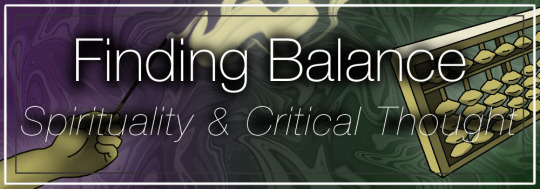
Title: Finding Balance: Spirituality & Critical Thought
Related Articles
What is Witchcraft?
Bias in Witchcraft
Spell Logs
Dualities
Content Creation Vs. Personal Practice
Spell Design
Spell Dictation
Spellcasting Basics
Finding Balance
Finding a balance between deep sacred connection and critical thinking in our magical practice becomes an art of integration. It requires us to honor and nurture the emotional and intuitive dimensions that anchor us to the mystical, while simultaneously engaging in rigorous analysis that hones our understanding and sharpens our discernment. By nurturing this delicate equilibrium, we embark on a transformative journey that embraces both the ethereal heights of the numinous and the grounded foundations of rational exploration.

Keeping What is Sacred
Magic, a subject that has captivated human curiosity for ages, extends beyond illusion and trickery. It delves into the depths of human emotion, evoking profound sensations of awe and sacredness. In the pursuit of understanding what magic truly feels like, it becomes apparent that its essence lies in the ability to establish and nurture a deep connection with one's practice. This connection goes beyond mere intellectual comprehension and encompasses a profound emotional engagement.
To grasp the true nature of magic, one must recognize the significance of feeling a sense of profoundness. This emotion arises when one encounters something that transcends the ordinary, igniting a feeling of astonishment and reverence. It is an experience that goes beyond the boundaries of rationality, encouraging us to explore the mysteries of existence. In witchcraft, this profoundness stems from the recognition of the extraordinary within the ordinary, the extraordinary concealed within the fabric of everyday life.
Feeling amazed pushes the boundaries of what we believe to be possible, expanding our horizons and inviting us to question the limits of our knowledge. Amazement manifests when we witness phenomena that defy conventional explanations, leading us to contemplate the hidden forces at play in the universe. Awe arises when faced with the vastness and grandeur of the world around us, awakening a sense of humility and interconnectedness. It reminds us of our place in the cosmic order and encourages us to contemplate the intricate web of existence. In magic, awe emerges when we encounter practices or rituals that connect us to the natural world, reminding us of the interplay between the microcosm and the macrocosm, and highlighting the profound interdependence of all things. Sacredness, the final pillar of magical experience, emanates from a deep reverence for the practice itself. It is the recognition of the inherent value and significance of the rituals, ceremonies, or acts of creation that form the core of magical engagement. The sacredness of magic lies in the belief that these practices possess transformative power, connecting us to something greater than ourselves. It is through this reverence that we infuse our practice with intention and dedication, forging a profound and enduring bond with the magical arts.
In order to fully engage with the magic that lies within our practices, it is crucial to nurture and sustain these profound emotions—profoundness, amazement, awe, and sacredness. These emotions are not fleeting, superficial experiences but rather foundations upon which the magical experience is built. They foster a deep connection with our practice, enabling us to tap into its transformative potential and embrace the mysteries that lie beyond the veil of the mundane.
Keeping what is sacred entails cherishing these profound emotions and allowing them to guide our journey through the magical realm. It requires us to approach our practice with a sense of wonder, curiosity, and reverence, ensuring that our engagement remains meaningful and enriching. By cultivating these emotions, we unlock the true essence of magic, embracing its transformative power and experiencing the extraordinary in the ordinary.

Retaining a Critical Eye
Critical thinking within witchcraft embodies a multifaceted approach that engages the mind in a systematic and analytical manner. It encourages practitioners to question, evaluate, and challenge beliefs, ideas, and concepts that underpin their craft. Far from negating the mystical elements of witchcraft, critical thinking acts as a compass, guiding practitioners to distinguish between reliable information and unfounded claims. It enables them to discern between what resonates with their personal truth and what may be mere speculation or fabrication.
Understanding the significance of critical thinking in witchcraft unveils its ability to safeguard practitioners against blind adherence to dogma or misleading information. By cultivating a critical eye, practitioners can scrutinize the sources of knowledge they encounter and assess them for validity, reliability, and coherence. Critical thinking becomes a shield against misinformation and misconceptions that may permeate the realm of witchcraft, allowing practitioners to build a solid foundation of understanding based on evidence, reason, and sound judgment.
Integrating critical thinking into daily magical practices is crucial for developing a well-rounded and informed approach. One way to achieve this is by cultivating an attitude of curiosity and inquiry. Practitioners should actively seek out diverse perspectives, explore different sources of information, and remain open to new ideas and interpretations. This mindset enables practitioners to continuously expand their knowledge, challenge preconceived notions, and refine their understanding of witchcraft.
Another vital aspect of integrating critical thinking is the development of analytical skills. Practitioners can hone their ability to analyze information, evaluate arguments, and identify logical fallacies. This empowers them to critically assess rituals, spells, or claims made within the witchcraft community. By applying logic and reason, practitioners can make informed decisions, distinguishing between practices rooted in tradition and those lacking empirical support.
Moreover, embracing skepticism as a tool for inquiry is essential within the realm of critical thinking in witchcraft. Skepticism, in this context, should not be misconstrued as dismissiveness or cynicism but rather as a healthy dose of questioning and inquiry. By maintaining a healthy level of skepticism, practitioners can avoid falling prey to unsubstantiated claims or unrealistic promises. They can embrace a balanced perspective that allows room for exploration while retaining a discerning eye.

Keeping the Scales Balanced
In the realm of magic, the pursuit of critical thinking can sometimes evoke concerns about the potential sterilization of the mystical arts. The fear of analytical scrutiny eroding the emotional and sacred connections inherent in magical practices is not unfounded. However, it is essential to recognize that finding equilibrium between critical thinking and magical experience is key. By exploring this delicate balance, we can foster a harmonious integration of rational thought without undermining the profound and enchanting aspects of personal spiritual encounters.
The notion of critical thinking can evoke images of sterile analysis and detached examination, which seemingly stand in contrast to the emotive and sacred dimensions of magical experience. However, it is crucial to approach critical thinking as a tool rather than a detractor. When wielded appropriately, it can complement and enhance the magical journey. Critical thinking offers the opportunity to examine beliefs, rituals, and experiences with a discerning eye, ensuring that they align with reason and evidence. It enables practitioners to navigate the vast landscape of spiritual exploration without blindly accepting unfounded claims or succumbing to cognitive biases.
To strike a balance between critical thinking and emotional or sacred connections within magic, practitioners must acknowledge the value of both. Emotional and sacred connections serve as conduits for personal experiences, imbuing them with meaning and significance. These connections enable practitioners to forge a deep and intimate relationship with their craft, allowing magic to become a source of inspiration, transformation, and empowerment. Emotional and sacred connections form the tapestry that weaves together the fabric of magical experience.
However, the integration of critical thinking need not detract from these connections. Rather, it can enrich and refine them. The key lies in embracing a nuanced approach that encompasses both rational thought and emotional engagement. Critical thinking provides a framework for evaluating personal spiritual experiences, encouraging practitioners to reflect on their own beliefs and interpretations. It allows for a deeper understanding of the mechanisms at work in spiritual encounters while preserving the awe, wonder, and mystery that make them magical.
An important concept in navigating the balance between critical thinking and magical experience is UPG (Unverified Personal Gnosis). UPG refers to personal spiritual experiences and insights that may not be universally accepted or supported by external sources. While UPG holds immense value for the individual, it is essential to rationalize and contextualize these experiences within the framework of critical thinking. This process involves reflecting on personal biases, considering alternative explanations, and examining the internal and external factors that may have influenced the experience. By undertaking this introspective and analytical exploration, practitioners can embrace the magic of their personal spiritual encounters while incorporating critical thought.

It is Natural
Within the realm of magic, the adoption of a critical approach may occasionally trigger periods of doubt. This is a natural consequence of engaging in a practice that delves into the unknown and challenges conventional beliefs. Recognizing the normalcy of doubt is paramount, as it allows practitioners to navigate their magical journey with authenticity and introspection. Moreover, understanding when to step away from magic and take a break can prove invaluable in restoring clarity and rejuvenation. Lastly, it is essential to resist the allure of mystical experiences and not neglect critical thought, as both are integral components of a well-rounded and balanced approach to magic.
Doubt, though often seen as a hindrance, is an inherent aspect of the human condition and, by extension, magical exploration. When undertaking a critical approach to magic, practitioners may question their beliefs, rituals, or experiences. This questioning should not be regarded as a sign of weakness, but rather as a testament to an inquisitive mind and a desire for deeper understanding. Doubt propels practitioners to examine their beliefs and motivations, enabling growth and self-reflection within their magical journey.
In certain instances, recognizing when to step away from magic and take a break becomes crucial. Engaging in continuous magical practice can be mentally and emotionally demanding. It is during these moments of respite that practitioners gain clarity and perspective. Stepping away from magic allows for introspection, allowing one to recalibrate and reevaluate their practices without the pressures of immediate engagement. By embracing the occasional break, practitioners can return to their magical pursuits with renewed vigor and a fresh outlook.
However, it is imperative not to succumb to the allure of mystical experiences and disregard critical thought altogether. While mystical encounters hold an undeniable fascination, practitioners must be wary of allowing these experiences to overshadow the importance of analytical thinking. By maintaining a balance between the mystical and the critical, practitioners cultivate a holistic approach that incorporates both awe-inspiring encounters and discerning analysis. This equilibrium ensures that magical experiences are grounded in rational exploration while embracing the profound mysteries that lie beyond the boundaries of everyday perception.

Interested in my other articles? You can find my masterpost here.
Patron Shoutouts!
Megan Kipp
Jinsu
Ing Mar
Cosmicauquamarie
Thank you for your continued support! My patrons help me maintain the drive to create content and help me keep food in my pantry.

My patrons of Mystic tier and higher had access to this article a week before it was public! To see other perks of supporting me, click here!
This article was reviewed and edited by ChatGPT
#beginner witch#baby witch#eclectic witchcraft#witchcraft#witchcraft community#witchcraft guide#witchcraft resource#witchcraft 101#informational post
85 notes
·
View notes
Text
Quincy's Golden Milk Tea
#witchcraft#witch resources#witch research#witch#witchy#wicca#spellcraft#spellwork#pagan#witchblr#tea#sleepy tea#witch recipes#witchy recipes#recipes#recipe
835 notes
·
View notes
Text
What it looks like to be an actual witch✨

Research on top of research on top of research - welcome to my unorganized but organized research grimoire scrapbook
#witchblr#witchcraft#witch#baby witch#witch community#magick#magic#research#witchcraft scrapbook#witchcraft resources#witchcraft research#witchcraft rules#actual witch#eclectic witch#witchcraft tools#traditional witchcraft
185 notes
·
View notes
Text
﹒ ⁺ ♰ ˳ ﹒









❍ ˳ 🧹 ➷ ༶









#halloween#whimsigoth#goth#witch#witchcraft#witchcore#favicon#favicons#cute favicons#pixels#pixel art#pixel graphics#cute pixels#rentry#rentry graphics#rentry resources#rentry gif#rentry inspo#carrd#carrd help#carrd stuff#carrd resources#emotes#aesthetic emote#discord emote
466 notes
·
View notes
Text
Witchy Resources
Astrology
Cafe Astrology - does your birth chart and it’s presented in a really cute way imo. It also gives you info about each placement and you can check compatibility and stuff too
Co—Star - I downloaded is the other day, it gives you quick daily horoscopes, do’s and dont’s for the day, and a longer breakdown of the horoscope
Dream work
Little Book of Dreams - I got this at a local store but you can get it for £4. It’s really cute and small, with just little summaries for what common dreams mean. It’s very simple but good for beginners in dream work
Deity worship (These are specific to Hellenism. You don’t have to worship Greek deities to be a witch but it’s what I have resources on because it’s what I follow)
Wikipedia - no seriously. It has info on so many different deities and their mythology so it’s actually quite useful.
r/Hellenism - a good place to ask questions if you’re new to deity worship and get some SPG on less common deities. Be sure to fact check
Amino - there’s a couple of Greek mythology and Hellenist communities on here. Like with Reddit, fact check!
Theoi.com - so much basic info on various deities, and it’s got epithets and things too that Wikipedia doesn’t have.
Tarot
Nata Soul Taro - probably the best pick a pile tarot readers I’ve found on YouTube. she also has a website and does personal readings. The videos are very calming and often really accurate
Zodianz - gives you three tarot cards and their meanings. Includes whether they’re yes or no, zodiac signs, planets and elements that correspond with each card, keywords for the card and then a short paragraph about the meaning. It also gives the meaning of the numbers in the card (like in 8 cups it tells you about 8)
If anyone knows any websites where you can learn tarot meanings let me know and I’ll add them to this list
Spell work
The Works - if you’re British, The Works has a lot of trinket boxes that you can keep spell ingredients in, and some potion bottles which are meant for crafts but they’re perfect for spell jars
Witchipedia - has some basic info about spells and some simple ones that you can do without needing many tools. Perfect for broom closeted witches, beginners or witches who can’t afford fancy stuff.
@strangesigils has some posts on common sigil methods, or, you can use some of their existing sigils!
Shadow work
Pinterest - I’m not kidding Pinterest has some great shadow work prompts if you just type in shadow work. Some are meh and some are really good
Co—Star - as well as astrology this also has a section where you can write a message to yourself and it’ll pop up the next time the stars are in the same position as they were when you wrote it
Crystal work
Holly’s Hope Beads - handmade crystal jewellery! My mum knows the girl who owns it and I’ve gotten a few pieces here. Really pretty and good quality
#witchcraft#witchblr#witch#pagan#paganism#hellenism#greek deities#tarot#astrology#co star#shadow work#crystals#crystal work#witchy things#witch resources#witchcraft websites#beginner witch#baby witch
874 notes
·
View notes